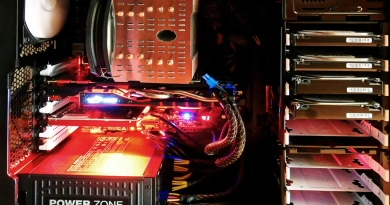The Battle for Global Connectivity: Why 6G and Satellite Internet Are on a Collision Course
We’re only just getting used to the promises of 5G, but in the world of telecommunications, the race is already on for what comes next. For decades, the path forward has been linear and predictable: 3G was replaced by 4G, which is now being replaced by 5G. The logical next step, the one the traditional telecom industry is betting on, is 6G.
But while the giants of cellular technology have been looking toward the ground, building out their next generation of towers, a revolutionary new competitor has been quietly blanketing the sky. Low-Earth Orbit (LEO) satellite internet, led by SpaceX’s Starlink, isn’t just a niche solution for rural customers anymore. It’s becoming a global powerhouse.
These two titanic forces—the evolutionary, ground-based power of 6G and the revolutionary, space-based power of satellite—are on a direct collision course. The prize is not just our phones; it’s the future of how the entire planet connects.
The Successor: What is 6G?
On the surface, 6G seems like a simple evolution: faster speeds, lower latency. But the vision is far more futuristic. We’re talking about near-instantaneous, “zero-latency” communication that feels real-time, with data speeds potentially reaching a mind-boggling terabit per second. This is the kind of connectivity needed to power a world of truly autonomous vehicles, holographic communication, and a seamless “Internet of Everything” where every device is intelligently connected.
- The Strategy: 6G will follow the traditional cellular playbook of upgrading and densifying the ground-based network of towers and small cells.
- The Weakness: It will inherit 5G’s biggest problem, but amplified. To achieve its incredible speeds, 6G will use ultra-high frequency terahertz waves. These signals are powerful but incredibly fragile; they have a very short range and struggle to penetrate walls, or even heavy rain. Blanketing entire countries, especially rural and remote areas, with this kind of infrastructure will be logistically and economically staggering.
The Disruptor: Satellite’s Global Reach
While 6G focuses on improving networks on the ground, LEO satellite constellations are bypassing ground infrastructure entirely. Companies like Starlink and Amazon’s Project Kuiper are deploying thousands of small satellites that orbit the Earth, capable of beaming high-speed internet down to any location with a clear view of the sky.
- The Strategy: A top-down, global-first approach. Instead of building a network city by city, they’ve built a network for the entire planet at once.
- The Strength: Unbeatable coverage. Satellite internet can bring true broadband to a farm in the Midwest, a research vessel in the Antarctic, a passenger plane over the Pacific, or a developing village in Africa—places where 6G towers will likely never be built.
The Collision Course
The battle begins where these two technologies start to overlap. The first shot has already been fired with “direct-to-cell” technology. Satellite companies are now partnering with mobile carriers, allowing standard smartphones to send texts and make calls via satellite when they’re out of cellular range.
For now, it’s a complementary service. But what happens when the next generation of satellite technology can deliver true broadband speeds directly to your phone, anywhere on Earth?
The future isn’t a battle where one technology wins and the other dies. The future is a hybrid network where our devices seamlessly switch between the best available connection. The real question is, which technology will form the foundational layer of that network? Will 6G be the default for 90% of our usage, with satellite filling in the gaps? Or will a global satellite network become the bedrock of connectivity, with 6G acting as a high-capacity “boost” layer in dense cities?
The race to define that future architecture is on, and the outcome will shape how we connect for decades to come.




